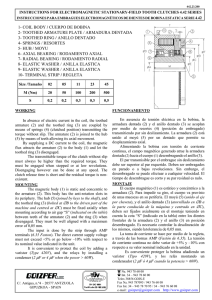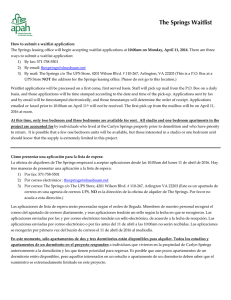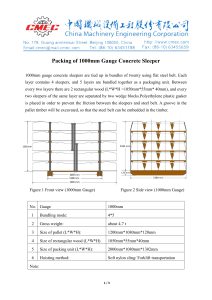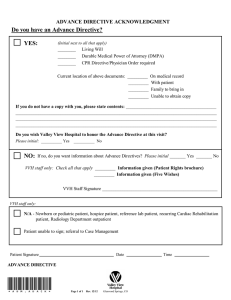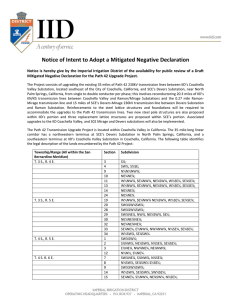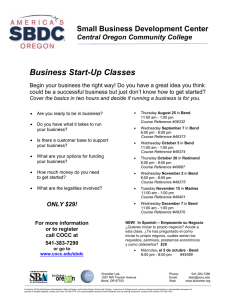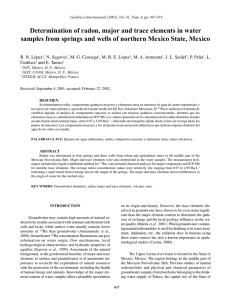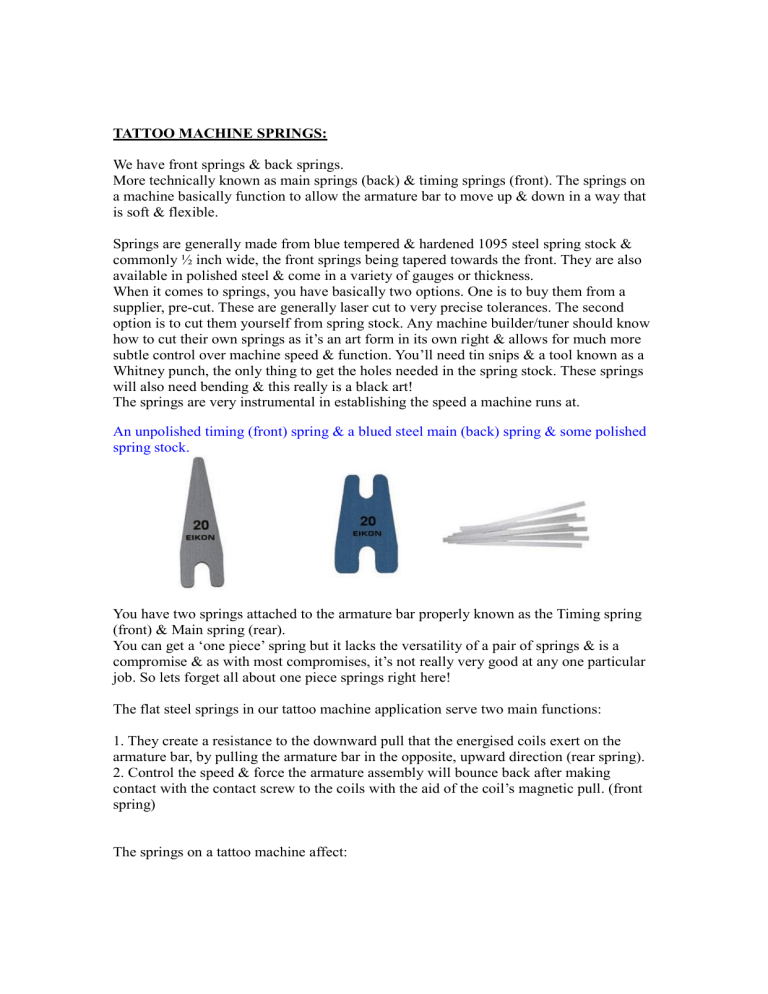
TATTOO MACHINE SPRINGS: We have front springs & back springs. More technically known as main springs (back) & timing springs (front). The springs on a machine basically function to allow the armature bar to move up & down in a way that is soft & flexible. Springs are generally made from blue tempered & hardened 1095 steel spring stock & commonly ½ inch wide, the front springs being tapered towards the front. They are also available in polished steel & come in a variety of gauges or thickness. When it comes to springs, you have basically two options. One is to buy them from a supplier, pre-cut. These are generally laser cut to very precise tolerances. The second option is to cut them yourself from spring stock. Any machine builder/tuner should know how to cut their own springs as it’s an art form in its own right & allows for much more subtle control over machine speed & function. You’ll need tin snips & a tool known as a Whitney punch, the only thing to get the holes needed in the spring stock. These springs will also need bending & this really is a black art! The springs are very instrumental in establishing the speed a machine runs at. An unpolished timing (front) spring & a blued steel main (back) spring & some polished spring stock. You have two springs attached to the armature bar properly known as the Timing spring (front) & Main spring (rear). You can get a ‘one piece’ spring but it lacks the versatility of a pair of springs & is a compromise & as with most compromises, it’s not really very good at any one particular job. So lets forget all about one piece springs right here! The flat steel springs in our tattoo machine application serve two main functions: 1. They create a resistance to the downward pull that the energised coils exert on the armature bar, by pulling the armature bar in the opposite, upward direction (rear spring). 2. Control the speed & force the armature assembly will bounce back after making contact with the contact screw to the coils with the aid of the coil’s magnetic pull. (front spring) The springs on a tattoo machine affect: * The voltage the machine requires. * The speed of the machine. * The stroke length of the machine. The Front (Timing) spring determines the machines speed. * To make a machine run slower, put a thinner (lighter gauge) front spring on it. * To make a machine run faster, put a thicker (heavier gauge) front spring on it. The Back (Main) spring provides the force that puts compression on the front spring. The machine will not run properly unless there is the correct amount of back spring force or tension. Back spring force or tension is made up of four factors. * Spring length. * Spring width. * Spring thickness (gauge) * Angle of deflection. Of these four factors, back spring angle of deflection is critical. There must be enough angle of deflection to establish the desired stroke length & front spring compression. Shorter spring ‘acts’ harder. Longer spring ‘acts’ softer. Wider spring ‘acts’ harder. Narrower spring ‘acts’ softer. Thicker spring ‘acts’ harder. Thinner spring ‘acts’ softer. These are all ‘spring basics‘. Springs are usually made out of close grain high carbon steel. Strapping steel. Feeler gauges, that sort of thing. Strapping steel can be found in the straps holding 2x4’s together for shipping etc. Also edging ‘tea chests’. The strapping steel has a blued finish to it. The steel has been heat treated. This treatment affects the rigidity of the steel. Generally, springs made from this ‘blue’ steel feel harder & have less flex than a ‘feeler gauge’ spring of the same gauge. A blue steel .018 gauge spring will feel stiffer than a feeler gauge non heat treated .018 spring. Test your spring between thumb & forefinger…try to ‘bow’ it, see if it springs back. If it doesn’t & stays bent, then it’s not spring! It’s worth understanding spring gauges. There’s two spring measurements in use, metric & imperial & both can confusingly be used on tattoo machines….at the same time! In the imperial system, the smaller the number on the spring stock, the thinner & more flexible the spring. The larger the number, the thicker & less flexible the spring. Generally, spring gauges are in imperial inch measurements, except when using metric feeler gauge spring stock. A .018 spring has a metric equivalent of .457 & a .017 spring has a metric equivalent of .432 etc. Some machine builders don’t like the use of the word gauge to describe spring stock, preferring ‘thousandths of an inch’ citing the fact that spring isn’t body piercing jewellery. It’s just being pedantic! A .018 front spring used in conjunction with a .017 back spring may be ideal for the proposed function of your machine. Maybe the drilling specs of a particular frame may require the stiffness of a .019 rear & a .018 for the front. So what’s the ‘ideal’ spring set up? Sorry, but there’s no such thing! Generally, a .018/.018 front & rear will work fine. Personally, I like a .020/.018 front/rear set up. However, a .018 front spring can be made to ‘act’ like a stiffer .020 by the use of a rubber ‘O’ ring, just to confuse things! More on the use of ‘O’ rings later. The flex of the .018 spring usually has the ‘ideal’ flex/stiffness for a versatile, well tuned machine. Sometimes though, a .018 maybe a little stiff for a rear spring if the spring saddle is very close to the back of the armature bar…a .017 may be the way to go here. As a very general guide, springs used will range between .017 to .020 for the rear spring & .016 to .020 for the front springs. Springs are rather inexpensive items in the scheme of things so it’s worth having a handful of all the available gauges & different sizes/shapes & even in the different finishes, blued or polished etc. In the tattoo machine application, tension on the springs is created by bending them or un bending them or even shortening them. If the distance between the spring saddle & the front of the armature bar is too great & the gauge of the rear spring is not thick enough, there will not be enough tension/leverage to move the armature bar at a force acceptable for proper needle penetration into the skin, no matter how big a bend you put in the back spring. Remember, the spring has to deal with the following: Armature bar weight including it’s assembly of components, needle bar/needle group weight, rubber band tension & how many needles must be forced into the skin AND the skin type! You might have to go up a gauge or two if needle penetration isn’t adequate. So, try to solve this little spring conundrum….You have a rectangular piece of spring stock which needs more flexibility. What could you do to this rectangular piece of spring to increase it’s flexibility? Check the diagram below.. You can cut, file & drill it; removal of metal on each side of the spring will increase flexibility & reduce tension. I know this seems pretty simple but a large percentage of tattooists cannot figure this out & wouldn’t know how to fix it. You do, now! Don’t be afraid to experiment with different shapes & thickness of your springs. It’s inexpensive & really wont break the bank if you screw it up! Now I’m going to get very technical on you with regards to springs. We know that energising the coils forms an electromagnetic field which pulls the armature bar down, opening the contact points, which interrupts the circuit, turning off the electromagnets. The back spring then returns the contact to the closed position, once again turning on the electromagnets & repeating the cycle. One complete cycle includes the duration of time the armature bar travels towards the magnets & back up to the closing of the contact, as well as the complete time the contact point remains closed, until the moment the contact point opens again. One complete cycle like this is known as an Oscillation. The frequency or speed of the machine is measured in oscillations per second. The distance of travel of the armature bar during one oscillation is measured as the length of ‘Stroke’ of the machine. The amount of time the contact remains closed in comparison to the amount of time the contact remains open is measured as a percentage. The measurement of the closed contact time is referred to as the ‘Duty Cycle’ of the machine. If the open & closed contact times were equal, the duty cycle measurement would be 50%. Still with me? Of all the components of a tattoo machine, the springs are the most important. The front spring establishes the speed at which the machine will run & it’s the back spring that determines the efficiency of the front spring. The desired speed of the machine is dictated by the application & style of the tattooing The exact speed will differ from tattooist to tattooist, but it is generally recognised that a liner will run faster than a shader. To be used effectively for tattooing, the machine must be fine tuned to work synchronistic ally with the needle configuration as well as the tattooists hand motion. Line work dictates that the machine runs quickly enough that the tattooist can draw a line & the individual punctures of the needle configuration are close enough to read as a clean, dense line. Efficient colouring requires that the punctures of the needle configuration are uniform in their spacing. If a machine used for colouring runs to quickly or the needles in the group are spaced to closely, the skin will be over worked. If the machine runs too slowly, or the needles in the group are too widely spaced, the colour will not be solid. The ability to adjust machines that have inefficient or incorrect spring combinations to the point of making the machine run useably well has always been dependent on being able to perceive the open & closed contact time as well as the speed of the machine. The limitations of available spring gauges & lack of proper meters to read frequency & duty cycles have necessitated this talent & raised certain individuals in the trade to near mythological status as machine experts & keepers of secrets! Most of these individuals did this intuitively, with only a vague comprehension of the mechanical principals involved, so their secret keeping was more a matter of ignorance than anything else! Don’t go away, there’s more….lots more! The duty cycle & frequency of a tattoo machine are affected by & can be adjusted by four main factors. 1. The contact point gap. 2. The amount of magnetism created by the electromagnets. 3. The hardness of the front spring. 4. The hardness of the back spring. The simplest & most obvious adjustment that can be made to a tattoo machine is the adjustment of the contact point. The contact is adjustable to fine tune the gap size of the contact point. Although measurable as a distance, this adjustment is a time relation, not a distance relation adjustment. The duration of time that the contact remains open is controlled by the size of the gap. This time adjustment is made to produce a balance between the time the contact remains open & the time the contact remains closed. When the open contact time is increased, the result is a longer distance of travel of the armature bar. The open contact time is the length of time it takes the armature bar to travel from closed contact until it hit’s the front coil & back to closed contact again. This distance is measured as length of stroke. When the length of stroke is decreased, the oscillations per second increase & vice versa. The contact point determines the distance of travel of the armature bar & fine tunes, in a time relation, the open contact time. The amount of magnetic force created by the coils is a direct result of the amount of voltage running through the electromagnets. More voltage creates more magnetism. The efficiency of the coils is not relevant to how a tattoo machine runs, as such. Some coils require more voltage to create the same amount of magnetism. The front spring must be chosen to establish the speed of the machine based on the open & closed contact time. The hardness of the front spring determines closed duration. A hard front spring will only stay closed for a short duration of time. To extend the closed contact time a softer front spring must be used. The softness results in contact, then flexing, then un-flexing & finally, opening of the contact. With a longer closed contact time, a balance is created by opening the contact gap, creating a longer open contact time, resulting in a slower running machine. A harder front spring gives a short closed contact time which will result in a faster running machine. This can be effected most simply by changing the gauge of the spring stock. Heavier gauge results in a harder spring. The length of the spring also determines it’s hardness, a shorter spring being less flexible. The angle that the spring is mounted to the armature bar also determines spring hardness. A flatter spring is less flexible. Therefore, a front spring mounted at a 10 degree angle to the armature bar will be harder than a spring of the same length & gauge that is mounted at a 20 degree angle to the armature bar. These two factors; spring length & mounting angle are the principles at work in running a liner in a ‘cut back’ style. A ‘cut back’ outline machine. This picture shows a ‘cut back’ front spring & a regular length front spring by comparison. Both factors increase front spring hardness, thereby shortening contact closed time & making the machine run faster. The width of the spring also affects spring hardness; a wider spring will be harder. Most front springs are cut so that the width of the spring is less at the contact point than it is at the point that mounts to the armature bar. This taper results in the spring being more flexible at the contact point, where it is narrower. This acts as a buffer, softening the opening & closing of the contact points. The amount of pressure the back spring exerts on the front spring & contact point is controlled by four factors: 1. The bottom gap of the armature bar. 2. The length of the spring. 3. The width of the spring. 4. The gauge of the spring. The back spring connects the armature bar to the frame via the spring saddle. The angle that the spring is mounted to the frame establishes the amount of force or lift, the back spring exerts on the front spring. This can only be measured by the distance between the front coil, & the bottom of the armature bar when there is no front spring on the machine. The greater the distance, the more pressure the back spring exerts on the front spring & contact point. There must be sufficient force applied to the front spring to make it work efficiently. The width of the back spring also determines the spring hardness. Just as with the front spring, a wider spring will be harder than a narrower one. The distance from the frame to the armature bar is the length of the back spring. A longer spring will be softer or more flexible than a shorter spring. On most machines this is not an easily adjusted distance because the needle bar must run down the centre of the tube. There is generally not much adjustability of back spring length. To achieve a balance between the front & back spring, the springs & armature bar should be considered as one component, like in the picture below. A complete armature bar/spring set up, with screws, washers, O ring & grommet. The front spring establishes the speed that the machine will run & the back spring determines the efficiency of the front spring. The action of one spring will be balanced by the other, the result being measurable as a correct duty cycle. A low duty cycle reading indicates that the closed contact time is short, in relation to the contact open time. This can be rectified by increasing back spring pressure using one of the four back spring variables. A high duty cycle reading would be corrected by decreasing the back spring pressure or hardness. Now go back & re read the Eikon armature bar test results…they should be making a bit more sense now! Spring Variables: The two diagrams below demonstrate front & back spring variables. The effect all this has on actual tattooing can be demonstrated by considering a power line or a thicker than usual outline. A thicker, stiffer spring may well work better for this sort of work with larger groupings of needles because it causes more counter resistance than a softer spring would, but it can also determine the ‘abuse’ the skin may have to endure if there’s not enough flex do deal with the resistance the skin will produce against the penetration of the needles. A stiffer front spring will also limit the machines function to a strictly power liner & will also require a higher power setting & may cause it to run warm. The technique of watershading/grey wash consistently & smoothly requires pretty low power, this wont work properly if the springs are too stiff & there’s too much tension on the rear spring. So, being familiar with the armature bar & it’s assembly now, consider this. You have a .016 or .017 front spring & a .018 back spring. You can use the machine well with a 5 or 7 magnum needle group for black & grey shading or even lining with a single needle or a tight 3 needle liner, but cannot use a larger outline needle group to line with or colour solidly with it, so why not? The resistance of the needles penetrating the skin causes the soft .016/.017 spring to flex allowing the needles to ‘bounce‘ or ‘back off’ from the skin on contact & not allow the needles to penetrate the skin deeply enough to colour solidly. Either keep this machine set solely for it’s above use/s that you can work with or change the spring for a .018. Don’t have a .018 to hand but really need one? Shorten the front spring by cutting it & move the contact back a bit is one way round it. Another way to do it is to reach for the ‘O’ rings. Rubber ‘O’ rings are just that. They come in a variety of thicknesses & diameters & are real cheap so you should have plenty of different sizes to hand. Selection of ‘O’ rings. When placed under the front spring & over the armature bar spring retaining screw, or alternatively, under the front spring & behind the back of the armature bar, like in these diagrams… the pull back on the front spring will increase the spring tension. A thicker ‘O’ ring will move the point of flexibility closer to the tip of the spring, so shortening the available spring stock, lessening it’s flexibility & increasing it’s tension. ‘O’ rings also smooth out vibration & lash & also minimize some noise. So, bending the springs. Unless your using an armature bar with the angles machined into it or an angle machined into the spring saddle on your machine, you’ll have to bend the springs to tension them. Even if you have a machined spring saddle, you’ll still have to bend the front spring. There are a couple of rules to follow when bending the springs. Mark the proposed bend with a fine permanent marker, just in front of where the washer will sit once secured to the spring saddle (rear spring) or where the washer will sit once secured to the armature bar/spring assembly (front spring). Hold the spring with vice grips & put the flat edge of a pair of needle nose pliers running perfectly parallel with the bend line you have drawn & bend the spring. DON’T go mad but don’t be too concerned with the angle just yet, there’s room for adjustment later, but your after an angle of approximately 15 degrees. Always leave a space equal to half the diameter of the securing washer before you start the bend. The bend should never end up under the washer or securing screw. The bend should always be in front of the edge of the washer. A bend under the washer will affect the flex of the spring, it will make for an inconsistent performance that can be heard & felt while tattooing. The picture shows a front & a back spring with the right bend to them….it’s what your heading for. The other picture shows a useful little tool for getting the right bend into a front spring, it can also be used as a jig to align the two springs & the armature bar when assembling them as a unit, it keeps everything nice & straight & helps with getting the screws nice & tight without the springs/armature bar skewing out of alignment. The bent springs. The useful little tool in use in use to bend a front spring. Some machine builders roll their springs rather than bend them, this does have it’s merits as the bend does create a weak spot in the spring & if it’s going to crack it’ll usually be along the bend…especially if you were a bit ham-fisted with the bending in the first place & had to take some bend back out! If you have to do this, try to ‘bounce’ it, bit at a time, don’t go in for the big bend straight off. To replicate the tension in a back spring, a spring tension gauge tool can be employed. Spring tension gauge. When assembling the two springs onto the armature bar they go on back spring first then front spring, directly on top of the back spring with nothing in between them. Some springs just have holes punched in them for securing them rather than the slots. Punched screw holes in a back spring. The benefit of this is that they will fit in exactly the same way, every time. The drawback is that the whole front/back spring/armature bar/securing screw/washers have to be completely disassembled & reassembled, every time you want to change a spring, which is a complete nightmare when your setting up/fine tuning a machine or experimenting with various spring gauges! Diagram & photo showing alternative front spring bends. I’m going to cover just how to cut your own springs from spring stock, useful to know if you intend getting serious experimenting with springs or you have a lot of machines or you fancy building a few machines. Or, like me, you just want to be able to do it all & this is another string to your bow! Just a little warning, most of the machines you’ll purchase will come equipped with springs of an indeterminate pedigree, they wont even be marked as to what the gauge is so you’ll have no way of knowing just what’s on there to start with if you have to replace them with the same gauge of spring. This is not very useful, really! Purchase a selection of springs from a good source…they will come marked with their gauge on them. With a decent measuring device, I use digital callipers, measure & compare the various thickness of the known spring gauges to the unknown ones on your machine. Now you know what you got! Write it down…you will forget when that spring wants replacing! Also, many machines come equipped with a pair of (unmarked as to gauge) chrome plated springs. They may look very nice & shiny. They will also be crap! Take them off & get some decent springs on there as soon as possible. Same deal if you open the box & discover a one piece spring on the machine, especially a chromed one….the best thing to do with it is to take it off the machine & throw it away! A one piece spring. Springs can be purchased from just about any tattoo supply company in pretty much any gauge you want costing a couple of pounds a pair. A 12” length of spring stock will cost you about the same but you’ll get 3 or 4 pairs out of it, so not only is it economical, the spring shapes & widths are yours to control & modify to find the perfect shape for what your trying to achieve. You will also learn a hell of a lot about springs, just take your time & be patient. You will need some tools to cut your own springs: * Lengths of spring stock in various gauges. * Steel ruler. * Fine tipped permanent marker. (a Sharpie is good) * Metal shears/tin snips…these come ‘handed’ for right or left handed use. * A Whitney hole punch, not absolutely necessary but will make your life so much easier, especially if your going to be making lots of springs. * A Dremmel with the larger diameter cutting discs. * Large flat file. * Vice grips. * Needle nose pliers. * Safety glasses. The front spring is usually triangular in shape with a ‘U’ shaped slot cut at the back of the triangle, where the spring attaches to the armature bar. The back spring is rectangular in shape with ‘U’ shaped slots cut into each end of the rectangle. One slot for the spring saddle end, the other for where it attaches to the armature bar. To cut a spring: 1. Mark the length of the spring on the spring stock with the marker pen. 2. Cut the spring to length with the tin snips or metal shears…hold it firmly with the vice grips. 3. Mark the triangular shape (for a front spring) on the cut piece of spring stock with the marker pen. It’s better to make the spring a little wider & have to remove some metal to improve flexibility if necessary than to start off with a spring that is too flexible. 4. Mark the width & depth of the slot in the rear of the spring. Make sure it will accommodate the size of screw in the armature bar used to secure the springs, usually an 8/32nd hex head screw. I know that seems pretty obvious, but it happens. I have some good springs (not cut by me!) where the slot has been cut too small for the securing screw. 5. With the piece of spring secured firmly in the vice grips, punch out the ending of the slot with the hole punch, now punch out another hole to the end of where you marked the slot. You should now have your mounting slot looking like a figure ‘8’. With the Dremmel, clean up the figure ‘8’ slot to straight edges. 6. Check now that the slot will accommodate your mounting screw! If not, now is the time to enlarge the slot. It’s worth noting that the closer you clamp the spring with the vice grips to the proposed hole or cutting marks, the stiffer the spring will be & the easier it will be to punch the hole/s & do any cutting, without the spring flopping around. WEAR THE SAFETY GLASSES! The pieces of spring being cut/punched are extremely sharp & will fly around once the cut is complete. 7. Hold the spring in the vice grips at the back of the spring & cut, with the tin snips/shears from the front of the spring, along your marked line, to the back of the spring, making sure you leave enough room for the snips to cut all the way along to the proposed end of the cut without interference from the vice grips. Spring stock marked & ready for cutting. Do the same on the other side. You should have a triangular shaped spring with a flat space at the tip & a flat equal distance section on each side with a slot in the back end of it. It should look like this…. Standard front spring shape. 8. Now smooth it off & remove all sharp edges & burrs. Jagged edges will cause vibration…& cut fingers/snag gloves. The spring you buy from a supplier will have been laser cut. You’ll never get them this smooth but get them as smooth as possible. The spring is now ready for bending. 9. It’s the same process for a back spring, but not the triangular shape, you’ll want the rectangular shape for the back spring. Back spring shapes. 10. Punch the holes & cut two slots, one either end of the spring, not forgetting the slot size/screw size etc. The slots being cleaned up with a Dremmel. This is a Whitney hole punch for making the holes in the spring stock. It’s also a good idea to mark your springs with their gauges, use the permanent marker or colour code them with small blobs of paint, whatever. Again, I know it seems obvious, but if you go this route, make a note of what colour you have used corresponds to what gauge of spring…you will forget! You might come across some front springs with a ‘contact point’ fitted, an actual little point, made of silver or copper attached to the very front of the spring where the contact screw will make contact with it. These wear/burn down & can be replaced. They were for use before machines had capacitors fitted & are unnecessary these days, but you can still get them if you want them. Picture shows a front spring ‘contact point’ in silver. There is another variation of back spring type & configuration found on some tattoo machines, & that is a coil spring set up. Usually found on small single coil machines where there just isn’t the room for a standard timing/main spring configuration. The spring is attached to the rear of the armature bar, which pivots on a fulcrum & is adjusted by means of a threaded rod attached to the spring & a thumbwheel/locknut affair. It is infinitely adjustable & the springs can be changed to achieve different spring rates, these springs can be had from specialist spring manufacturers. If you pester one enough & show them exactly what you want & what you are trying to achieve they might even wind you some specifically for your application, but your going to have to have a thorough understanding of variable coil spring rates etc., so you can explain to them exactly what it is your wanting/needing them to do for you. You’ll breathe a sigh of relief when I tell you I’m not going to go into that here! The pictures below show a single coil machine with its coil rear spring set up & a close up of the spring/adjustment mechanism. Finally, I’m reproducing Eikon’s (those appliance of science to tattooing people again) spring tests for you, just for interest/reference: The Eikon Tests. To conduct the tests, springs were made of twelve different gauges of carbon steel feeler gauge stock, from 0.013” to 0.024”. the springs were identical in design, one made of each gauge of feeler gauge stock to ensure the only variation from spring to spring was the hardness, due to the gauge of the stock. The back springs were ½” wide. As each back spring was installed, the mounting bend was adjusted to give 4 mm of bottom gap. The front springs were ½” wide. One complete set were tapered from the bend to the contact point. One complete set were ½” inch wide, with no taper. All the bends in the font spring were set at 15 degrees. All tests were conducted on the same machine frame, with the same electromagnetic coils. One variable voltage power supply was used for all tests. The speed of the machine was measured using a multimeter capable of measuring frequency. The duty cycle of the machine was measured using an oscilloscope. In the first test, the machine frame was set up with the thinnest gauge back spring, & the thinnest gauge tapered front spring. The contact point gap & the voltage were adjusted until the machine ran as well as possible. The point gap, voltage & frequency were recorded. This was repeated with each of the tapered front springs. The next gauge of back spring was then installed & all the possible front springs installed, adjusted & the results recorded. A total of fifty spring combinations were tested. Spring combinations that were too extreme would not run efficiently. Thin gauge back springs would not work in conjunction with the heavier gauge front springs, & the heavy gauge back springs would not work in conjunction with the thin gauge front springs. This established that certain spring combinations are more efficient than others. In all cases the hardest front springs resulted in the fastest running machine. The second test was conducted using spring combinations from the initial test that were most efficient. In this series of tests the stroke was measured & recorded showing that as speed increases, length of stroke decreases. A third test was conducted using the twelve front springs that were not tapered. Results of this test were not recorded as it was not possible to obtain efficient operation of the machine with unhampered front springs. Certain spring combinations had been established as producing a machine that runs efficiently. An oscilloscope was used to identify the duty cycle of the machine. In all cases the measured duty cycle of these spring combinations was from 50% to 60%. Spring combinations that had previously been established as inefficient produced a duty cycle higher than 60% or lower than 50%. This proved that the measurement of duty cycle is a means of obtaining correct spring combinations. Tests were then conducted to examine the functioning of the machine at various duty cycles. The results of the tests indicated that maximum efficiency of the machine was obtained at a duty cycle of 55%. A test was required to determine the significance of the angle of the front spring. Four gauges of front springs were chosen with corresponding back springs to achieve a duty cycle of approximately 55%. The test showed that as the angle of the front spring increases, the speed of the machine decreases. Proving that a decrease in mounting angle of the front spring is equivalent to an increase of spring gauge. Further tests were conducted to measure the effect of the variables of back spring pressure. The bottom gap was set at 4 mm. The machine was adjusted & the results recorded. The bottom gap was then set at 3 mm, the machine adjusted & results recorded. This test was re-done with a back spring one gauge thinner. The results showed that reduction in bottom gap was equivalent to reduction of gauge spring stock. Tests were conducted using narrower & wider gauge spring stock at a set bottom gap. The results proved that a reduction in width was equivalent to a reduction in spring stock. Phew! I know… it’s all so clear & simple now, isn’t it?! I do know it’s a lot to take in in one go & might even fly in the face of what you might have been told before. Take in as much as you can handle & understand at a time. Go back & re read it over & over till you do have a thorough understanding of the principals involved. It really will pay dividends with your tattooing & you’ll be a proper little spring demon & be able to bore the arse off anyone at parties when they ask you about tattooing…trust me, they wont be ready for/interested by that little lot & will soon leave you alone & stop asking stupid questions!
